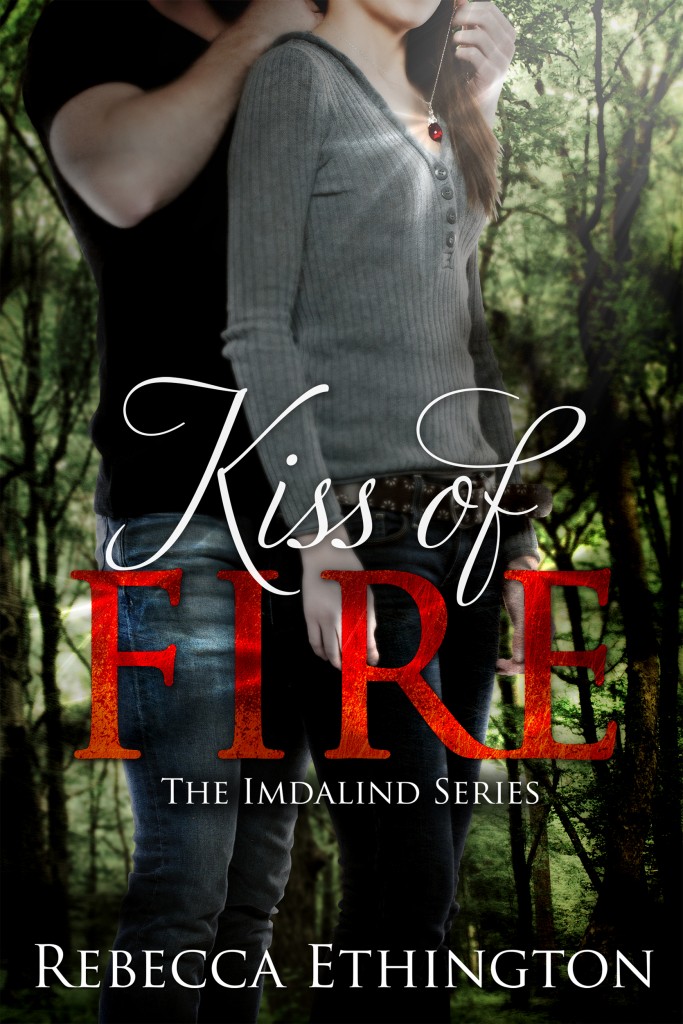Rebecca Ethington is taking over Finding Bliss today as part of her Kiss of Fire Blog Tour.
I asked her to write about her tips for pacing a novel. And, man she delivered!
Did your story have good build up and keep your readers engaged?
No? Maybe? You’re not sure?
You have pacing issues, my friend.
Pacing ultimately begins with the plot of your story. Plot is more than story; it’s the meat, the actual step by step road map of your story. Plot is the in-depth, the long term and the hidden bits of story that make up your amazing novel. Does your plot have lots of conflict, and good development? Without both your pacing is going to suffer. A lot of action goes by too quick, too much inner monologue and not much conflict tends to be slower. So where do you want to be? Somewhere in the middle. You want to manage your readers with your pacing. Give them a break with slower bits, and hold them on the edge of their seats with the rest.
But finding the sweet spot right in the middle can be tricky.
In case you don’t know my literary background begins in dark theatres and padlocked notebooks hidden under my bed. The first thing I openly sent out into the world was a co-written script about a bunch of kids who get trapped in a cave only to be systematically murdered. Which means that theatre scripts are where I get most of my pacing experience from, so most of my personal tips are going to bleed over from that.
Some of my personal little tricks (Bring on the theatre baby!)
- Mood – You are sitting in a darkened theatre and the lights begin to dim, the music melds into the low whisper of wind, and a lone woman steps onto the stage. In the theatre mood is set with lighting, music, and ultimately with dialog. The same can be done in writing; lots of emotional descriptions and a detailed set of the scene automatically sets a mellow mood and in turn slows the pace. The same is true for faster paced scenes, brighter lights, powerful music, quick paced dialog creates an intense mood the drags your reader or audience forward. The mood of your writing dictates your pacing. By making the mood clear for each scene as well for your entire novel from the beginning you are able to set a strong expectation of pacing, and prepare you reader for what is to come.
- Cliff hangers – I LOVE cliff hangers, I also HATE cliffhangers. I write a lot of them, but I think every good story teller does, they are crucial for keeping your reader engaged and building a solid plot. Cliffhangers are one of the best ways to speed up pacing, they draw the reader forward from one chapter to another, from one paragraph forward. Fights, trauma, new information; they all lead to different levels of tension and pacing. In theatre the most common cliffhanger is the one placed right before intermission – the climax.
- Jump cuts – A quick scene change from one place to another is another way to help improve pacing. This is a common technique on stage, and easy to follow as actors appear on different sides of the stage, or on different set levels. In written literature it is also a very effective technique – as long as you readers can follow. If it only creates confusion, it will actually have the opposite effect and slow the pacing down.
- Rapid Fire! A great example of rapid fire pacing is the final fight in Harry Potter. Chapters upon chapters of fight in the battle of Hogwarts. You are moving from one section of the castle to another, different battles, death, from one character group to another. It draws you in, and keeps you there as the pacing keeps its level high. Those are the books that keep you up late at night.Now, obviously you can’t have a novel that’s quick paced the entire time. The pacing needs to fit the setting of the scene, let the love scenes move slower, the fights move quickly.
Thanks so much Laura for having me, and for hosting the tour!



















I am sharing this blog page with some aspiring authors I know...this will really help them out!
ReplyDeleteGreat post! Pacing can totally get tough in the middle so those are great tips to remember!
ReplyDeleteGreat, helpful tips. Thanks for sharing.
ReplyDeleteWow sounds like a great book and excellent giveaway!
ReplyDeleteI meant looks like a good book
ReplyDeleteThanks for all the tips! I'd never thought to connect it with the idea of theater. That's a compelling way to think about pacing!
ReplyDeleteI've never given much thought to pacing in my own writing. Thanks for the tips.
ReplyDeleteGreat tips! Thanks. Have fun on the blog tour!
ReplyDeleteAwesome! Thanks!
ReplyDeleteGreat giveaway!!
ReplyDeleteGreat tips!! Thanks for sharing!!
ReplyDeleteGreat tips for pacing a novel ... I usually have trouble amping up the pacing at the very beginning :)
ReplyDeleteThanks for the post and good luck with the book tour, Rebecca!
Thanks for the post and the giveaway
ReplyDeleteFantastic post! Thanks so much for sharing, and for the AMAZING giveaway. :)
ReplyDelete